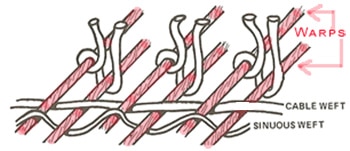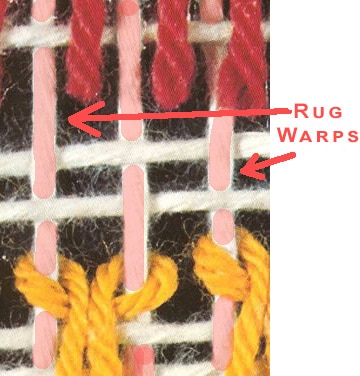Rug Warps and Weaving Carpets
The antique rug warps
Rug Warps – Although rugs are practically omnipresent in our day to day lives, and even though each of us has probably seen or stood on literally hundreds of different rugs over the course of our lives.
Most people are not aware of the age-old processes and skills that go into the construction of such pieces — it simply doesn’t occur to us to casually look at a rug and wonder just how it was made, just what keeps it together, just what it’s all about.
In fact, the art of rug making is a fascinating process that has essentially been honed into a science over long centuries of practice and perfecting.

Rug Warps
First, you should know that rugs primarily consist of two different groups of fibers: the rug warps and the rug wefts. The warps are the yarns that run vertically around the horizontal frame bars on the loom, while the wefts run horizontally. Generally speaking, both the rug warps and the rug wefts consist of plied yarns, which, in turn, consist of one material.
As a rule of thumb, this singular material may be wool, cotton, or silk.

Rug Warps
While the concepts of warps and wefts and looms may be slightly outside of the general knowledge of the collective consciousness, almost everyone knows what the fringes on a rug are — the tassels that may be found running along the perimeter of a rug or carpet.
In fact, if you recognize fringes, you actually also recognize warps — on a finished rug, the exposed ends of the warps are what comprise the fringe. The construction of fine rugs is one of mankind’s great skills, and to know about it is to know the history of art and culture a little bit better.
Depressed Warps – Structure of rugs
Depressed Warps – Before introducing the horizontal wefts, the successive, parallel vertical warps on the loom are all on one level, determined by the horizontal loom bars that they wrap around.
When the wefts is introduced if it is put in loosely with minimal tension, it literally snakes its way over and under each warp across the loom. If, however, the wefts is pulled tightly from either side, it will displace the warps through which it passes into two levels, one upper, one lower.
On the back of the rug, this bi-level structure will appear to have a ribbed or corrugated surface with an upper warp and a lower or ‘depressed’ warp. In cases were the wefts are pulled absolutely tight, the depressed warps may not even show on the back of the rug. Many city rugs, especially those made in Persia have this structure.
It results in a stiffer, denser weave that is less supple or flexible and which will lie more flatly on the floor without buckling or wrinkling. This is a highly desirable structure for room-sized rugs in high traffic areas.
This rug article was published by Nazmiyal Antique Rugs
